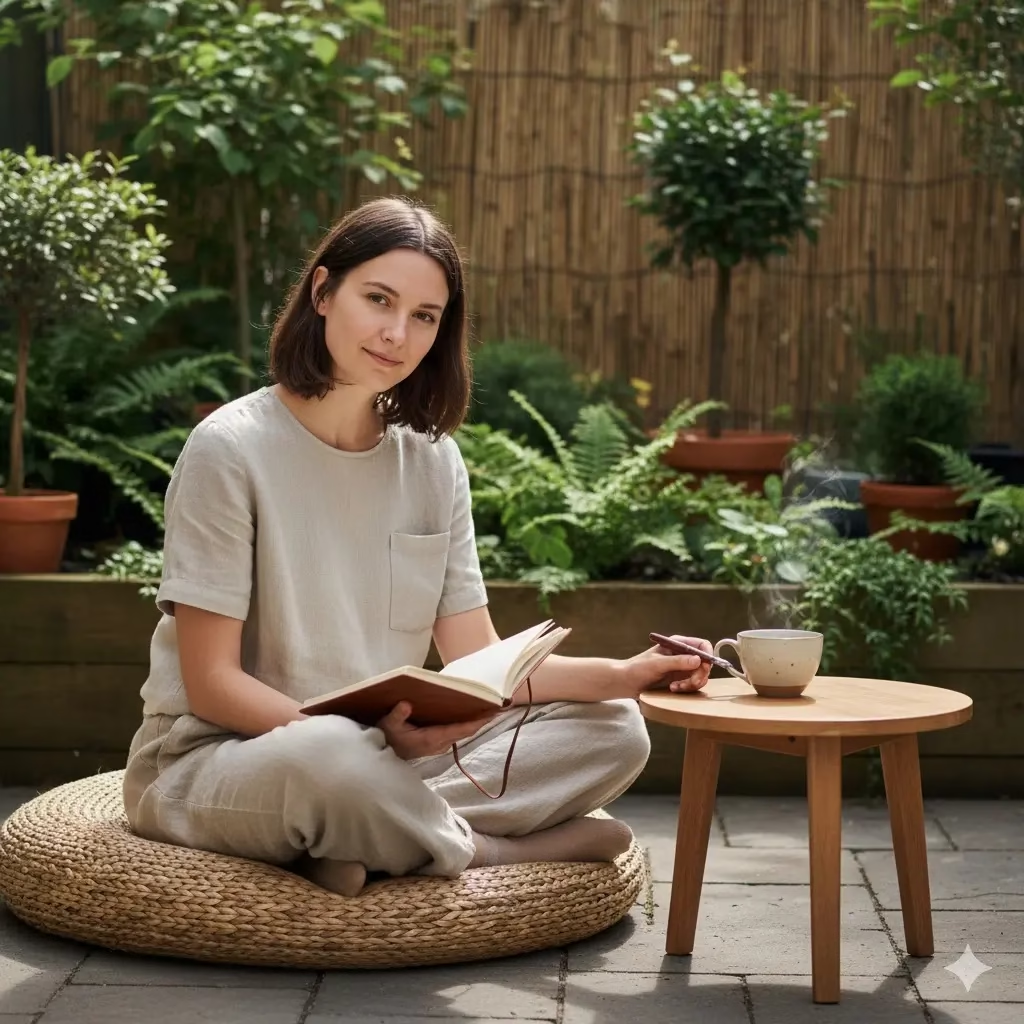
A belief shared by many in design is that our living spaces deeply affect how we feel. Through study and experience, we learn how much power a simple, calm home has, especially after navigating the chaos of modern life. The pursuit of creating quiet, green spaces filled with the Best Plants leads to a collection of insights on how small changes can bring deep peace. This exploration shows how nature can clean your air and calm your spirit.
In our fast, busy world, finding quiet and calm spots inside our homes is more important than ever. A “Zen space” is not just about looks; it is about creating an area that helps you feel peaceful, lowers stress, and makes your thoughts clearer. While organizing and simple design are key, one item adds unmatched life, peace, and cleaning power: plants.
The right indoor plants do more than just look nice. They actively clean the air, boost your mood, and link us to nature. And are a soft cure for modern stress. They become living, breathing parts of our own safe place. They quietly work to clean our physical surroundings and our inner peace. If you are ready to make your home a truly calm spot, keep reading. We will show you the 10 best plants to clean your space and mind.
The Power of Green: Why Plants Belong in Your Zen Space
Before we look at our top choices, let’s quickly see why plants work so well to create a Zen feeling:
- Air Cleaning: Many house plants are known for filtering out bad chemicals like formaldehyde and benzene from the air. This natural cleaning gives you cleaner, fresher air to breathe.
- Less Stress: Studies show that seeing or caring for plants can lower blood pressure, reduce feelings of worry, and help you relax. The simple act of caring for a plant can be like a quiet meditation.
- Better Mood and Focus: Green areas are known to help you concentrate and be more creative. The bright green colors are easy on the eyes. They can help reduce mental tiredness.
- Nature Link: We live in more cities now. Plants offer a vital tie to the natural world. They bring the calming feel of the outdoors inside. This connection is key to the Zen idea.
- Look Great: Besides their cleaning uses, plants add beauty, feel, and life to a room. They soften hard edges and make the space feel more welcoming.
Now, let’s look at the best plants that do these jobs well. They will help you make a truly Zen space.
1. Snake Plant (Sansevieria trifasciata)
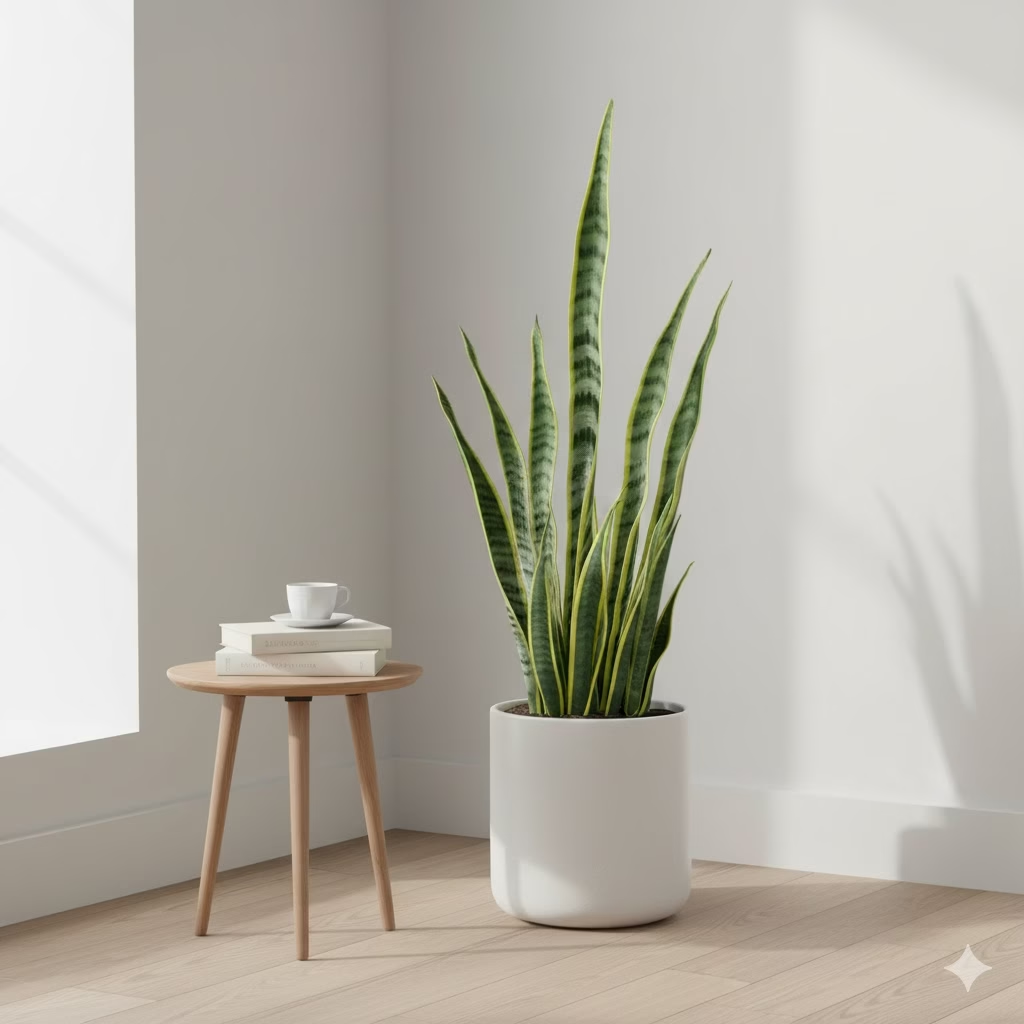
Why it’s Zen Approved: The Snake Plant is the best example of simple elegance that needs little care. Its tall, straight leaves look modern and simple, which fits Zen design perfectly. But its uses are much more than just looks. It is one of the best air cleaners, known for taking out formaldehyde and other toxins. What is special is that it also turns carbon dioxide into oxygen at night. This makes it an ideal plant for your bedroom to help you sleep better.
How to Do It:
- Light: Can handle many light levels, from low to bright, indirect light. Great for new plant owners.
- Water: Water rarely. Let the soil dry out fully between times. Giving it too much water is the only real threat.
- Placement: Perfect for room corners, next to the bed, or as a tall plant on the floor.
2. ZZ Plant (Zamioculcas zamiifolia)
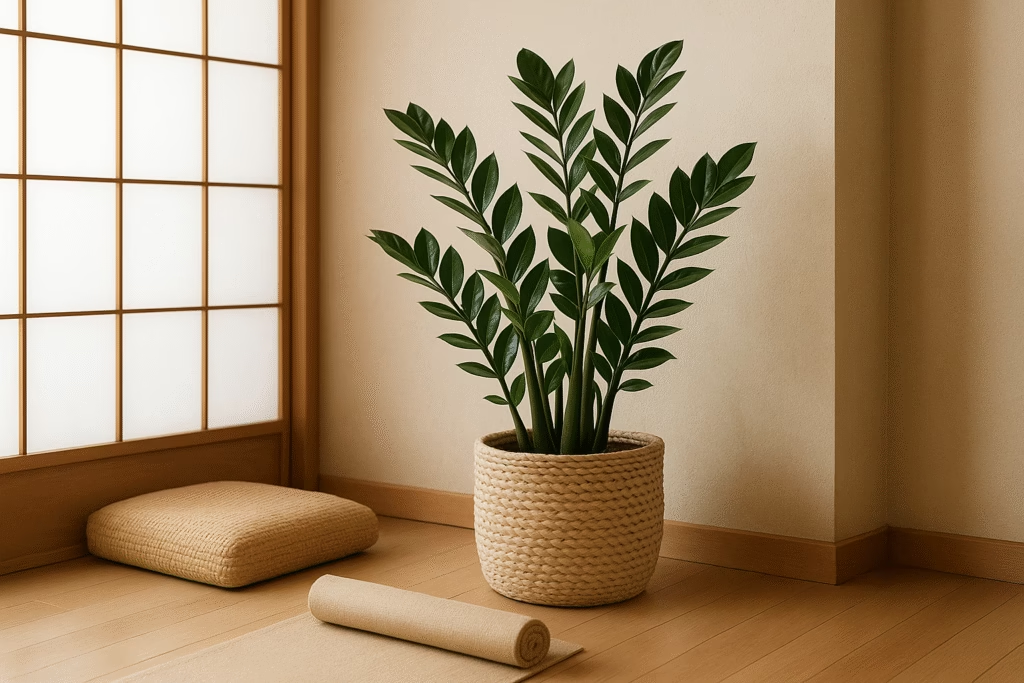
Why it’s Zen Approved: If you want a plant that looks strong and calm, the ZZ Plant is your choice. Its waxy, dark green leaves look naturally shiny. Its ability to grow even if you forget about it shows its Zen-like self-reliance. It also helps clean up common air pollutants. It makes your air cleaner with very little work from you.
How to Do It:
- Light: Grows well in low to medium indirect light. Keep out of direct sun.
- Water: Water very little. It stores water in its roots, so it is better to water less than too much.
- Placement: Great for offices, living rooms, or any spot that needs green without needing constant care.
3. Peace Lily (Spathiphyllum)
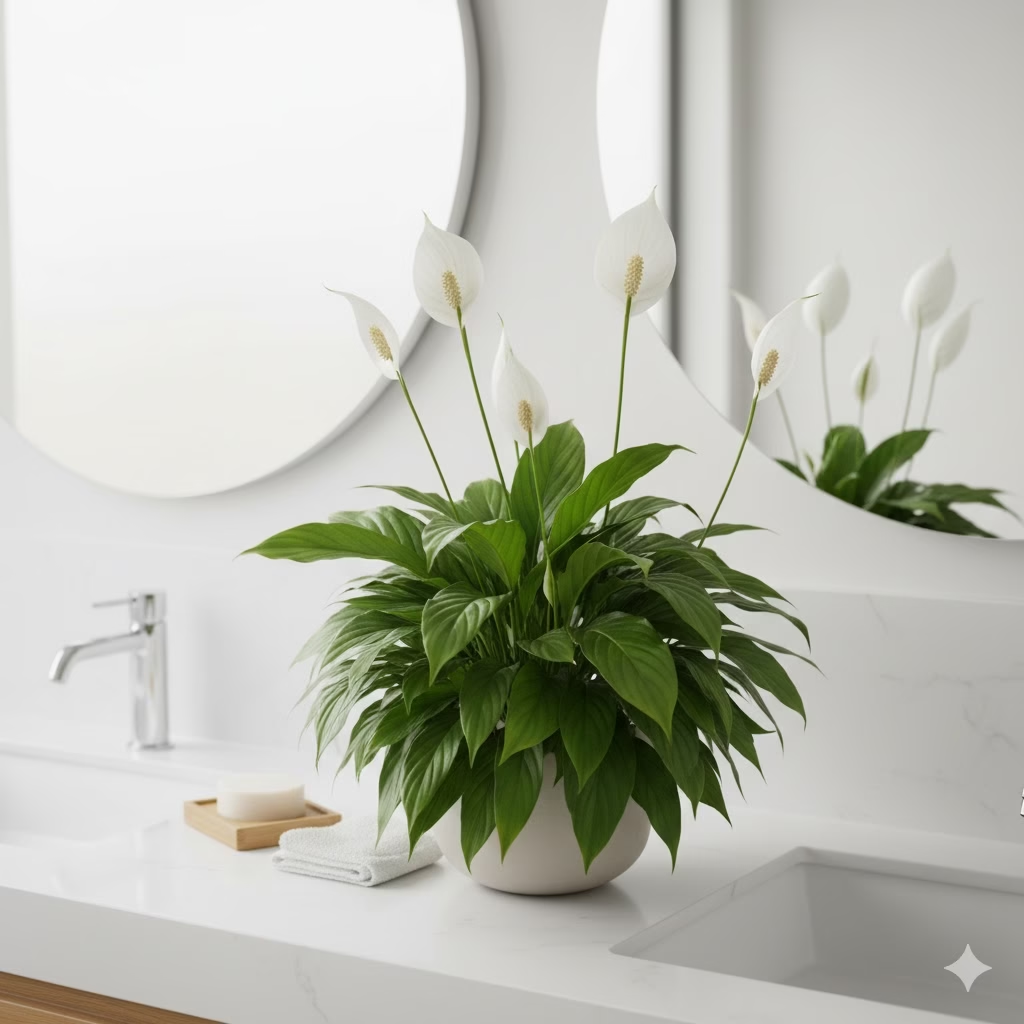
Why it’s Zen Approved: Its name tells you everything. The Peace Lily means calm. Its lovely white parts look like flowers rising above rich green leaves. This brings a sense of pure peace. Besides being beautiful, it is a strong air cleaner. It fights chemicals like ammonia and formaldehyde. It even shows you when it is thirsty by drooping a little. This makes it easy to care for.
How to Do It:
- Light: Likes medium to low indirect light. Too much direct sun can burn its leaves.
- Water: Keep soil wet, but not soggy. Water when the top soil feels dry, or when leaves start to droop slightly.
- Placement: Works well in bathrooms (it loves the steam), bedrooms, or living areas where you can see its gentle shape.
4. Pothos (Epipremnum aureum)
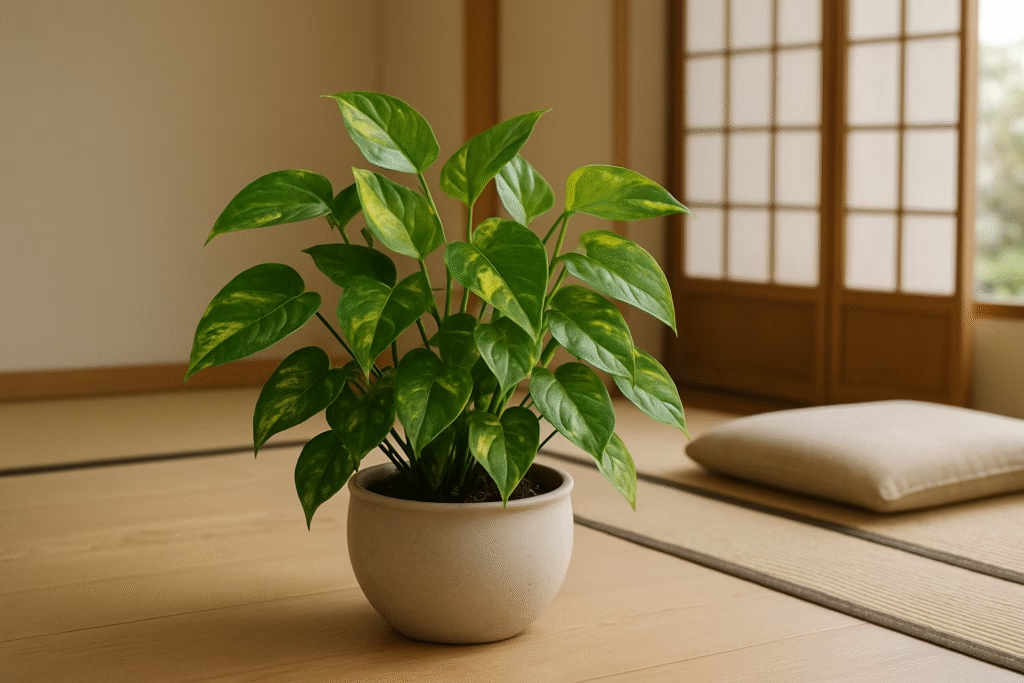
Why it’s Zen Approved: The Pothos, or Devil’s Ivy, is easy to forgive and very flexible. Its vines hang down, creating a flow of green that softens any spot. This adds a natural, moving element that helps you relax. It is great at removing poisons from the indoor air, such as formaldehyde and benzene. This makes it a strong yet quiet air cleaner for your home.
How to Do It:
- Light: Can handle low to bright indirect light. Avoid direct sun, which can burn leaves.
- Water: Let the top few inches of soil dry out before watering again. It is quite fine if you miss a watering.
- Placement: Ideal for hanging baskets, high shelves where its vines can hang, or on top of tall furniture.
5. Spider Plant (Chlorophytum comosum)

Why it’s Zen Approved: The Spider Plant is a favorite for good reasons. Its curved, striped leaves and small “babies” create a light, open feeling that adds to a peaceful atmosphere. It is a top air cleaner, very good against formaldehyde. Its ease of making new baby plants also gives the plant owner a pleasing feeling of growth and connection.
How to Do It:
- Light: Likes bright, indirect light. Can handle less light but may grow fewer babies.
- Water: Keep soil wet but not soaking. Try to avoid using tap water with lots of fluoride, as this can make leaf tips turn brown.
- Placement: Great in hanging planters, on tall shelves, or as a desk plant.
6. Boston Fern (Nephrolepis exaltata)
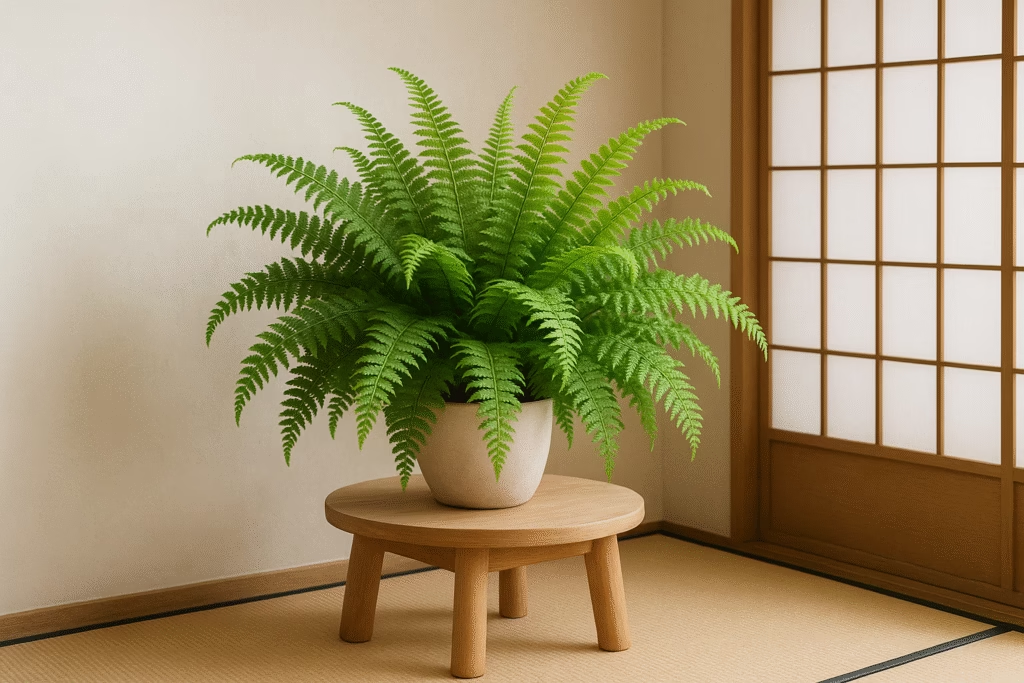
Why it’s Zen Approved: If you want a plant that is full and brightly green, the Boston Fern is the best. Its soft, airy fronds add a smooth, natural feel to a room, like a quiet forest floor. This fern is very good at taking out formaldehyde. It also acts like a natural humidifier, putting moisture into the air. This is especially good in dry places, making the air more comfortable and soothing.
How to Do It:
- Light: Bright, indirect light is best. Do not put in direct sun.
- Water: Needs to stay wet. Do not let the soil dry out. It likes high humidity, so spray it with water often or place it near a humidifier.
- Placement: Best for bathrooms, or on a stand where its hanging fronds can be seen.
7. Aloe Vera (Aloe barbadensis miller)
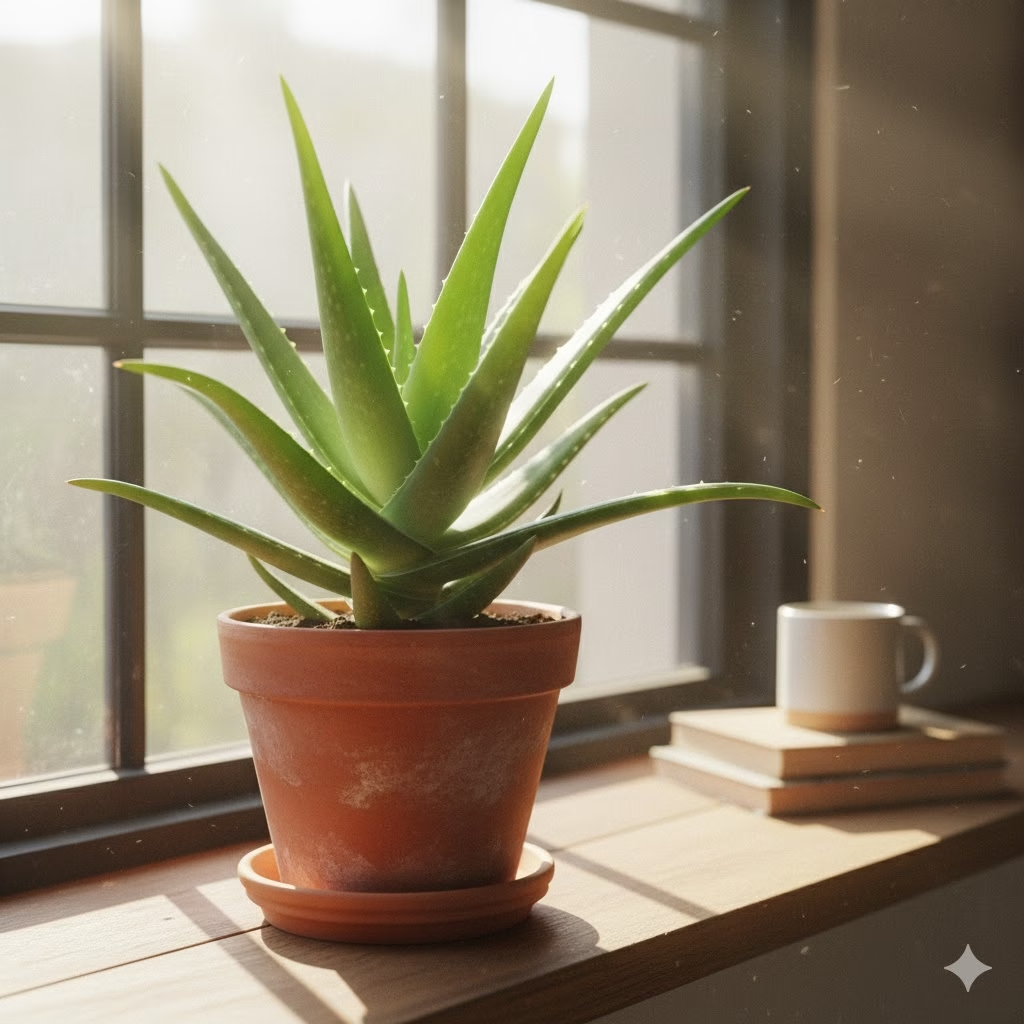
Why it’s Zen Approved: We know Aloe Vera for its healing uses (the gel inside its leaves can help burns). It also helps create a Zen space in simple ways. Its ability to live on its own makes it stand for strength and natural healing. It is also good at cleaning the air of formaldehyde and benzene, which are often found in cleaning products. Its shape is simple yet beautiful.
How to Do It:
- Light: Needs bright, direct sunlight for several hours each day. South-facing windows are perfect.
- Water: Water rarely. Let the soil dry out fully between waterings. Too much water will cause its roots to rot.
- Placement: Sunny windowsills, kitchen counters, or a bright spot on a desk.
8. English Ivy (Hedera helix)
Why it’s Zen Approved: English Ivy is a classic, trailing plant. It brings an old-world beauty and a feeling of lasting growth, showing strength. It is especially good at cleaning the air, targeting germs and also taking out formaldehyde and benzene. This makes it a great choice for bathrooms. Its thick leaves add a lovely look and feel.
How to Do It:
- Light: Prefers bright, indirect light but can handle less light.
- Water: Keep soil wet, but let the top part of the soil dry out a little before watering again.
- Placement: Perfect in hanging baskets, draped over shelves, or even trained to climb small supports.
9. Rubber Plant (Ficus elastica)

Why it’s Zen Approved: With its wide, shiny leaves, the Rubber Plant makes a striking point. Its strong, upright presence can ground a space, bringing a sense of steadiness and calm. It is an excellent air cleaner, removing toxins like formaldehyde. Its large leaves are great at turning carbon dioxide into oxygen. Its grand, yet easy-care nature makes it a perfect Zen partner.
How to Do It:
- Light: Bright, indirect light is best. Can handle medium light, but it may grow slower.
- Water: Let the top few inches of soil dry out between waterings. Wipe leaves now and then to keep them clean and help them take in light better.
- Placement: As a tall plant on the floor in a living room, hallway, or a large bedroom corner.
10. Lavender (Lavandula angustifolia)

Why it’s Zen Approved: Lavender is mostly an outdoor plant. Small types can grow well indoors with enough care, especially near a sunny window. Its soft purple flowers and rich smell are known to be calming and help you sleep. The smell alone can lower anxiety and bring a deep feeling of rest. This makes it a special and strong addition to your Zen plant group.
How to Do It:
- Light: Needs lots of direct sunlight (6 or more hours daily). A south-facing window is a must.
- Water: Let soil dry out between waterings. It needs soil that drains well.
- Placement: Sunny windowsills, especially in bedrooms or quiet spots where its smell can be most enjoyed.
How to Do It: Integrating Plants into Your Zen Space
Adding these best plants to your home is more than just buying them. It is about placing them in a smart, thoughtful way.
- Start Easy: Do not feel worried. Start with one or two plants that you like and that fit your light. As you feel more sure, slowly add more to your group.
- Pick the Right Pot: Choose pots that match your Zen style. Natural materials like simple ceramic, clay, or simple concrete in soft colors (grey, white, black, natural wood) are best. Do not use pots that are too busy or too brightly colored.
- Think About Light: This is the most important thing for plants to live. Look at your home all day. Which windows get direct sun? Which areas are always shady? Match your plants to these spots.
- Group Plants: Putting plants together in small groups can look better. It also helps raise the moisture in the air nearby, which many plants like. Mix up heights and textures to make it interesting to look at.
- Place for a Reason:
- Bedroom: Snake Plant, Peace Lily, Lavender for better air and sleep.
- Living Room: Rubber Plant, Pothos, ZZ Plant for general air cleaning and to look nice.
- Bathroom: Boston Fern, English Ivy, Peace Lily thrive in the steam and clean the air.
- Workspace: Spider Plant, Pothos for focus and calm.
- Care is a Ritual: Think of watering, spraying, and trimming not as chores, but as quiet times to connect with nature. This simple act of care can become like meditation. It helps increase the Zen feel of your space.
- Listen to Your Plants: Yellow leaves, drooping, or slow growth all mean your plant is trying to tell you something. A quick search for ” [plant name] yellow leaves” can usually tell you what is wrong. Learning to meet their needs makes your bond stronger.
Cultivating Your Inner Garden

Adding the best plants to your home is an investment in feeling good. These natural cleaners not only clean the air we breathe but also calm our spirits, lower stress, and build a stronger connection to nature. Each plant chosen with care adds to the feeling of peace you are creating in your home.
Start your journey now. Pick one or two green friends from this Zen-approved list. Watch as they change not only your space but also your mind. They will bring a deep sense of calm, clarity, and peace to your daily life.
Frequently Asked Questions (FAQ)
Q1: How can I tell which plants are truly “easy to care for”?
A1: Easy-care plants are usually ones that can handle different amounts of light. They forgive you if you forget to water them. They also do not often get bothered by bugs. Plants like the Snake Plant, ZZ Plant, and Pothos are great examples of easy choices. Always look up what a plant needs before you buy it.
Q2: Can plants really clean the air, or is that just an old story?
A2: Yes, plants truly do clean the air! NASA’s famous Clean Air Study showed that many common house plants can remove large amounts of bad chemicals like formaldehyde from the air. While one plant will not clean a huge room, a group of plants can make a clear difference in the air quality inside.
Q3: How many plants do I need to see a difference in air quality or mood?
A3: There is no strict rule. A common guide from some studies suggests one plant for every 100 square feet of space for better air cleaning. For a better mood, even one or two plants placed well can help a lot. Focus on making groups that feel right to you, instead of trying to hit a certain number.
Q4: My home does not get much sun. Are there any Zen plants for dark rooms?
A4: Of course! The Snake Plant, ZZ Plant, and Pothos handle low light very well. This makes them perfect for less sunny spots. Peace Lilies also do well in medium to low indirect light. Just remember that “low light” does not mean “no light.” All plants need some light to live.
Q5: What are the most common mistakes people new to plants make?
A5: The two biggest mistakes are watering too much (which causes the roots to rot) and not enough light. Always check how wet the soil is before watering. Make sure your plant is in a spot that meets its light needs. Forgetting to learn what your plant needs is also a frequent mistake.
Q6: Are there any plants I should not use in a Zen space?
A6: In general, avoid plants that need constant attention or that have very strong smells that might take away from the calm feeling (unless you choose a calming scent like lavender). Also, if you have pets or small children, look up if a plant is safe before bringing it home.
Q7: What is the best way to keep my plants healthy and bright?
A7: Taking care of them on a regular basis is key. Give them the right amount of light, water when they need it (not on a set schedule), make sure the water drains well, and think about feeding them during the growing months (spring/summer). Check for bugs often and wipe their leaves to keep them clean. This helps them take in light better. Most importantly, learn to ‘read’ your plant and change how you care for it as needed.
References
- NIH – Effects of Indoor Plants on Human Functions
- Semanticscholar – The psychological benefits of indoor plants
- Healthline – 7 Science-Backed Benefits of Indoor Plants
Recent Posts

